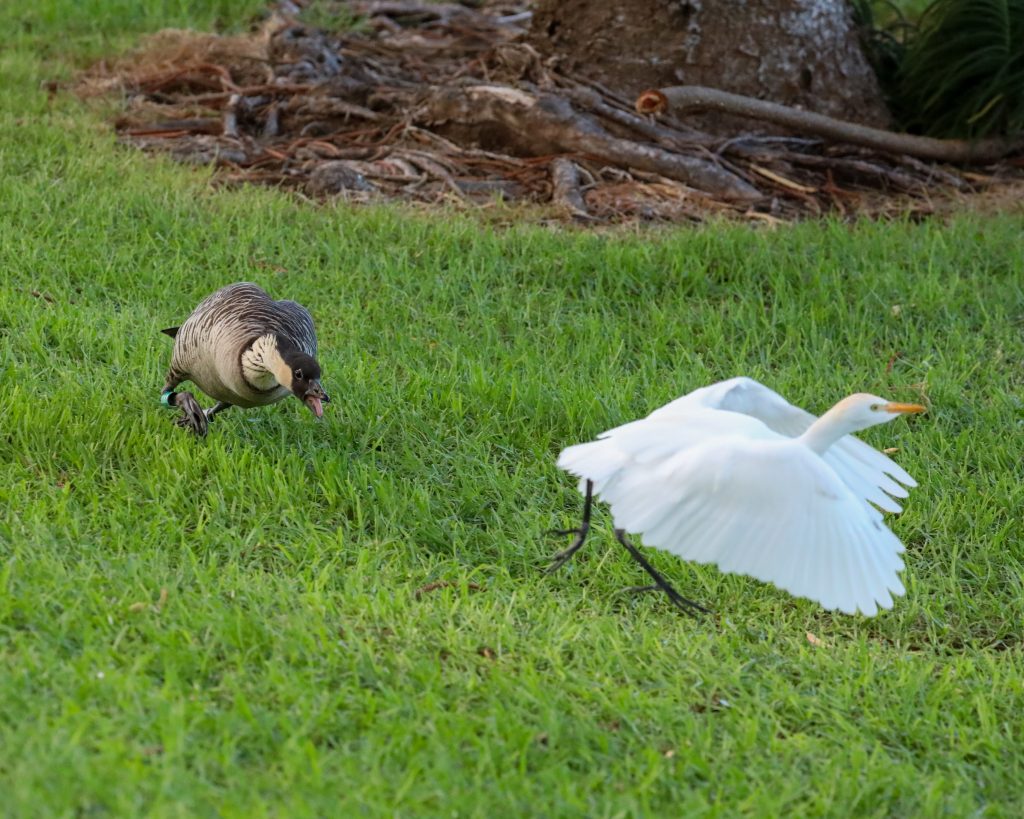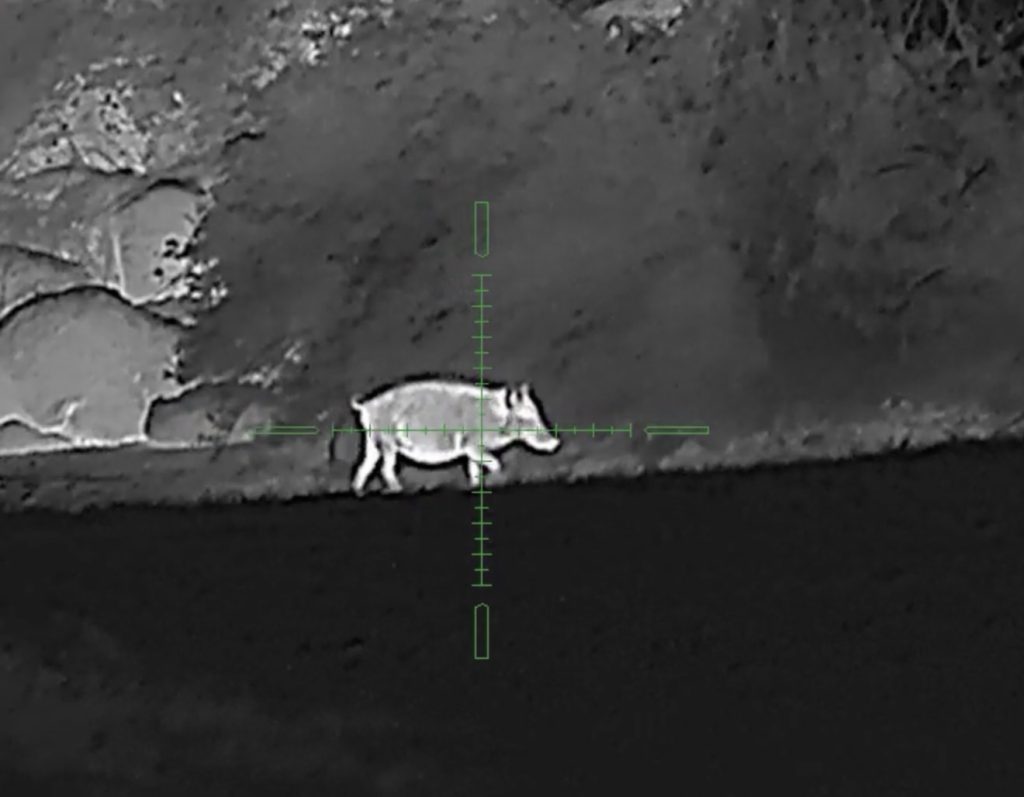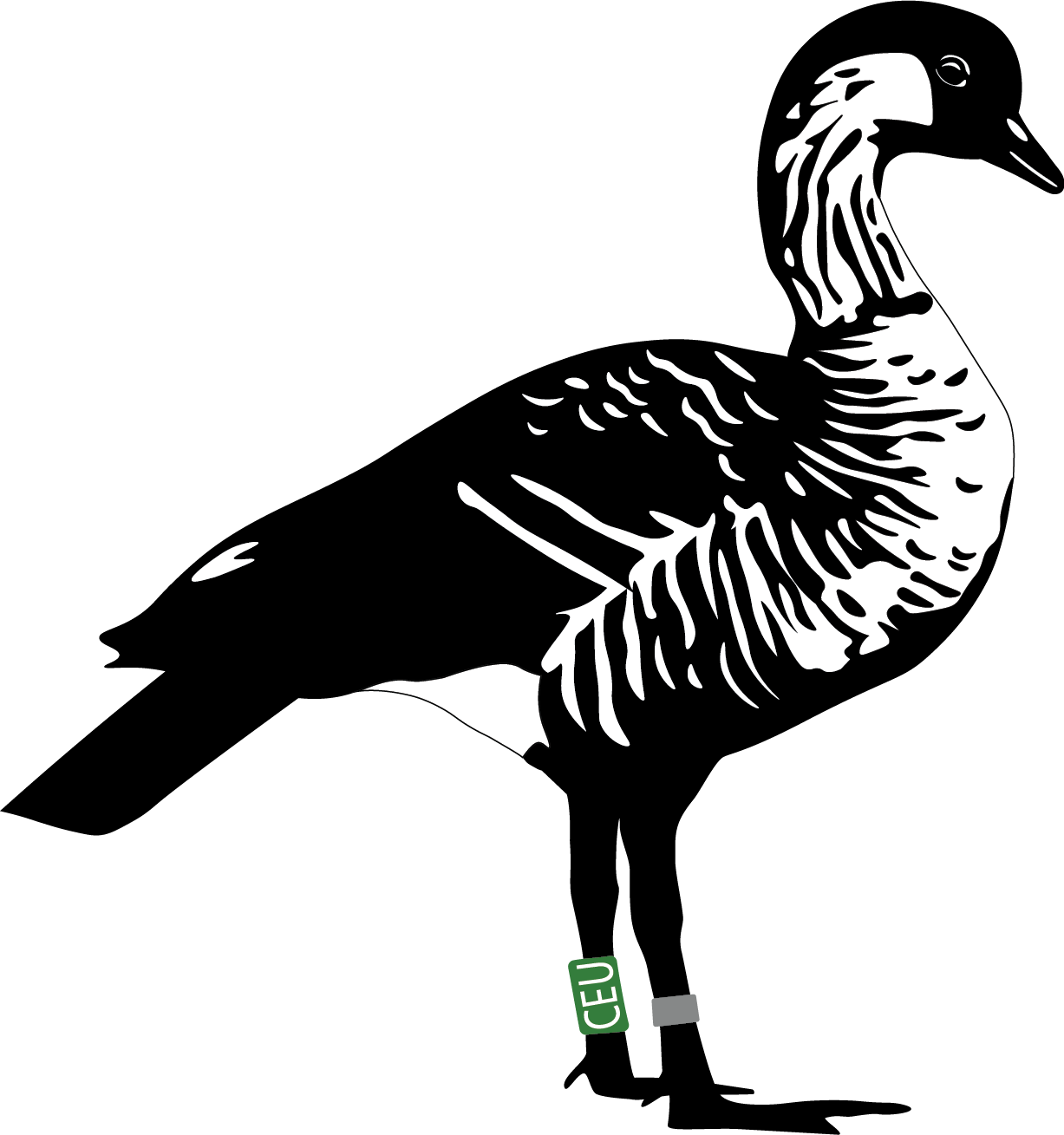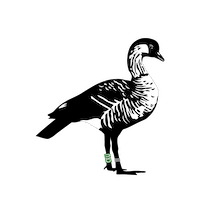July – September 2024 Nene Updates
It’s an Early Nesting Season!
In the third quarter of 2024, we recorded 766 sightings of 581 unique Nēnē across Hawaiʻi Island, Kauaʻi, Maui, and Molokaʻi. So far this year we have recorded 3,152 sightings of 858 unique individuals. We are so grateful to have so many folks sending in photos and sightings of Nēnē from around the State. We are still interested in any and all photos of Nēnē including individuals you may have seen and sent in before. By analyzing when and where each Nēnē was seen, we can learn about their habitat usage and migration patterns during different parts of the year. The sightings this quarter help us determine when nesting season will start! In late July, we detected the first individuals moving away from traditional flocking sites toward nesting habitats. In September, we discovered our first few nests! This past quarter, we have been working to expand current partnerships and establish new ones to facilitate more education and outreach opportunities. We are also broadening our mongoose removal initiatives and addressing other threats like pigs and cattle egrets. Last month, we received a new shipment of AT220 traps from New Zealand, which have already been deployed in nesting habitats to remove more mongoose. Additionally, we expanded our predator control efforts to target pigs, which destroy nests and can injure or even kill adult Nēnē and goslings. We are pleased to report that at one site, where we have been conducting predator control since March 2023, we have seen an increase in sightings of both Aeʻo (Hawaiian Stilt) and ʻŌpeʻapeʻa (Hawaiian Hoary Bat)!
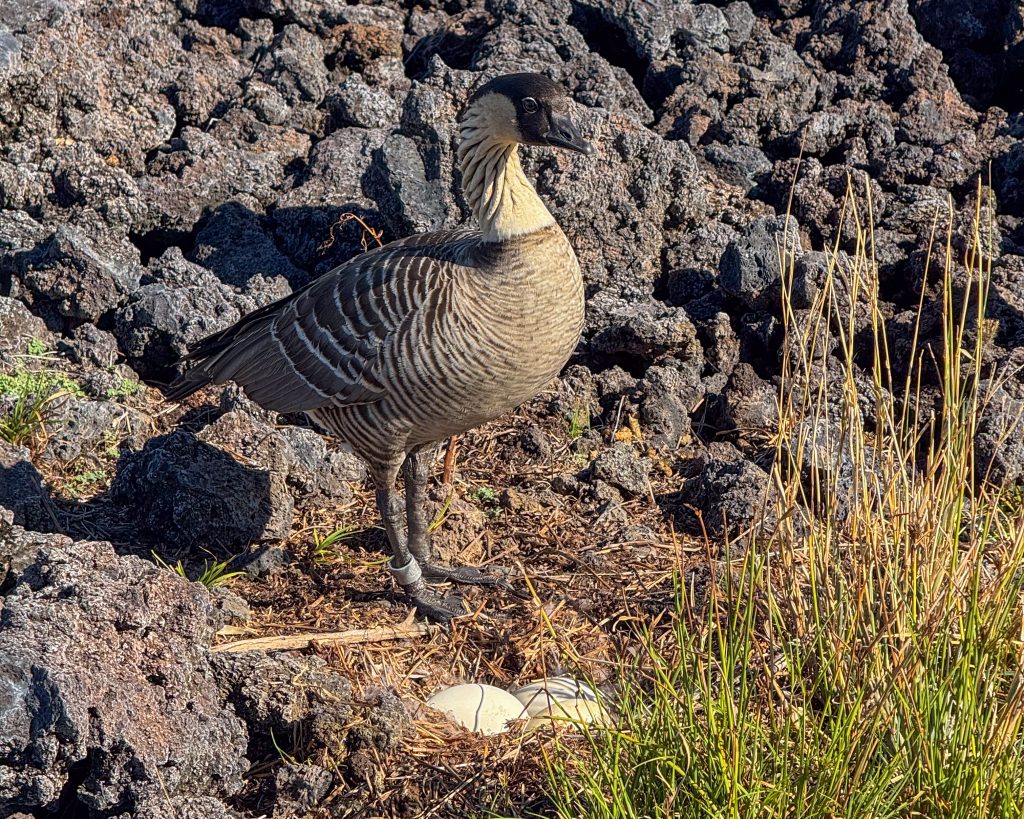

Sand Island Seabird Fall Out
In early July, we began discovering seabird carcasses in Sand Island State Recreational Area, heavily predated by cats and possibly barn owls. According to an HMAR volunteer the feral cat population estimate for Sand Island was over 1,000. Despite reaching out to the State for assistance in monitoring, we have largely taken on this initiative ourselves, conducting bi-weekly surveys, acoustic monitoring, and nighttime burrow searches. Although we are primarily a Nēnē-focused organization, we are eager to engage in projects like this where management strategies align with our goals for Nēnē conservation. So far, we have documented 52 seabird carcasses, recovering both ‘Ua’u kani (Wedge-tailed Shearwaters) and ‘A’o (Newell’s Shearwaters). We are sharing our data with both the Hawaiʻi Department of Land and Natural Resources and the U.S. Fish and Wildlife Service.

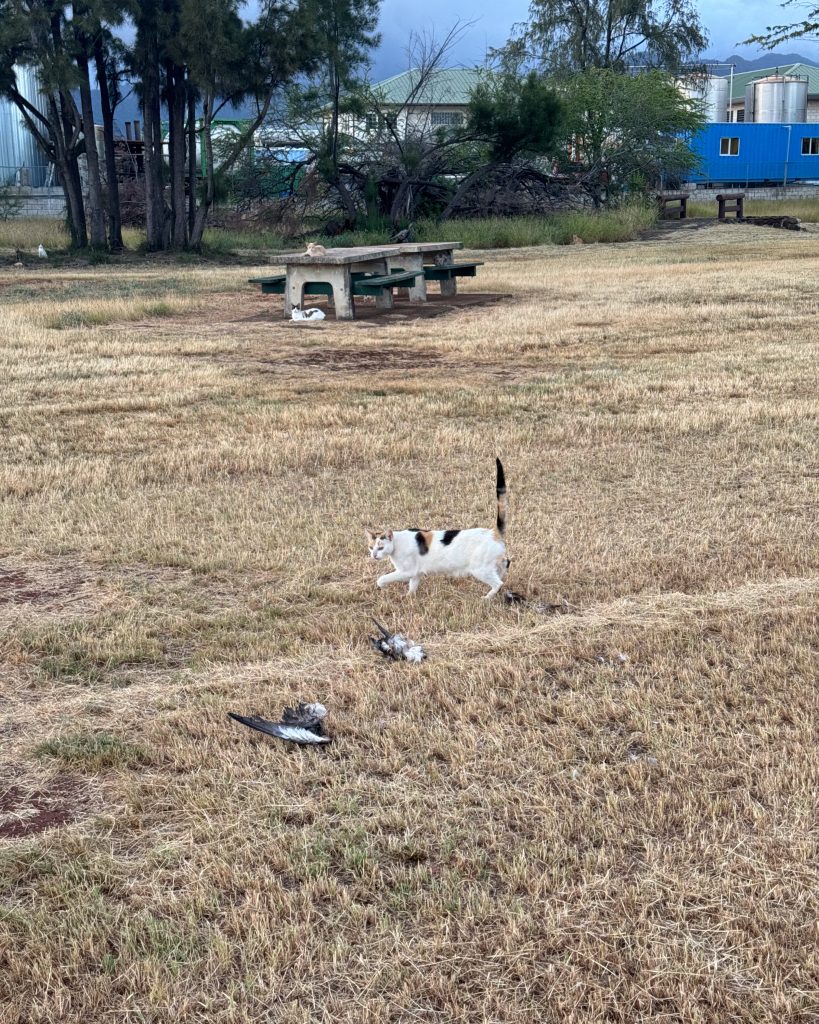
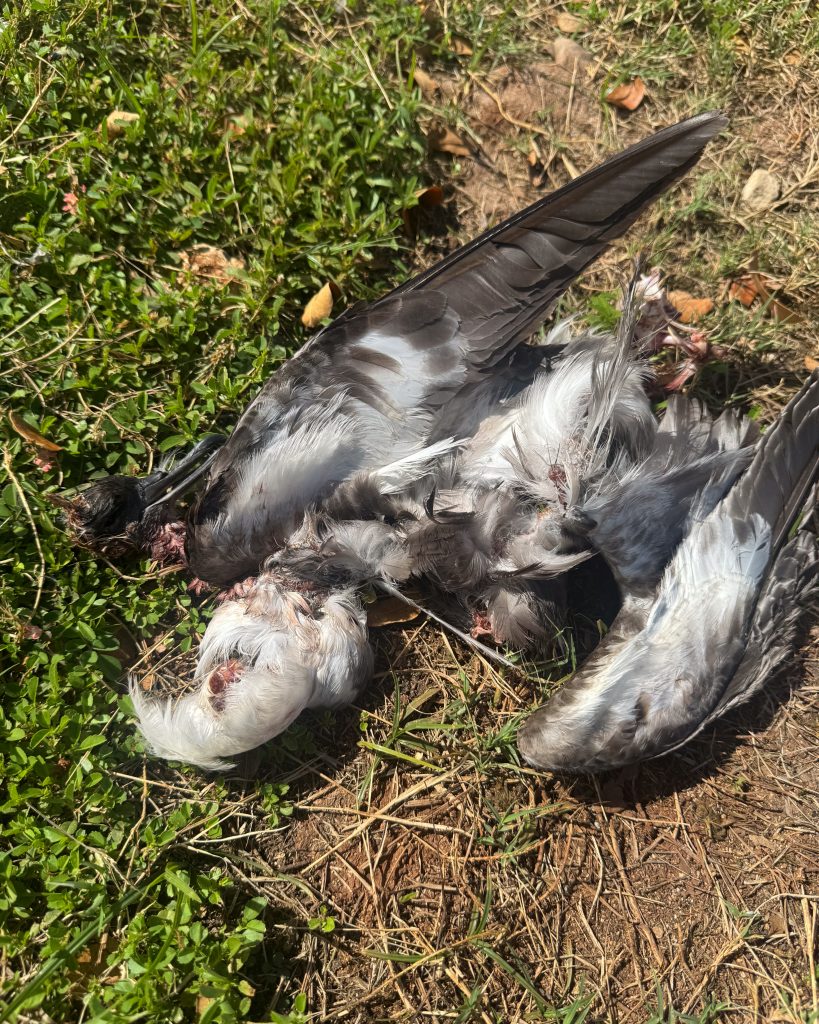
Cat and Nene Feeding persists at Liliuokalani Park and Queen’s Marketplace
The cat colony feeder who was charged with harming Nēnē appeared in court in September. On May 1, 2024, Doreen M. Torres was cited for allegedly violating laws protecting endangered species. The case was filed on May 6, 2024, in the Hilo division of Hawaii’s Third Circuit Court. During her first court appearance on June 21, 2024, she was assigned a public defender, and the case was delayed. At a July 19 hearing, it was discussed that Torres might take a class on endangered species as part of resolving the case. On September 20, 2024, her case was continued and she is scheduled to appear again in November.
We found 7 Nēnē eating cat food at Liliuokalani Park on September 3rd. We removed the food and tried our best to move the nene away from the cat colony. We notified DLNR and hope more action can be done to prevent further harm to native species.
We are also continuing to monitor the Nēnē and Cat situation at Queen’s Marketplace in Waikōloa. We have documented at least 84 unique individual Nēnē eating cat food this year. We have been in communication with the property owners, DLNR and U.S. Fish and Wildlife Service to try and figure out how to solve this problem. During a nighttime survey of the area we found at least 21 Nēnē roosting in the parking lot and adjacent lava flow.

First Official DLNR Collaboration
In July, we received a research permit from DLNR to use existing satellite telemetry data to develop new tools for Nēnē biologists. We are building a web-based application that will provide deeper insights into Nēnē movements and incorporate both community and our own sighting efforts. While we are beta-testing these tools on Hawaiʻi Island, we hope they will also aid in the recovery of Nēnē on Maui and Molokaʻi. Our initial features include using machine learning models to identify sub-populations within sighting data and highlight critical areas that may overlap with threats such as cat colonies and vehicle traffic. Additionally, we are improving analytics and reporting to alert biologists to potential tag failures before they occur.
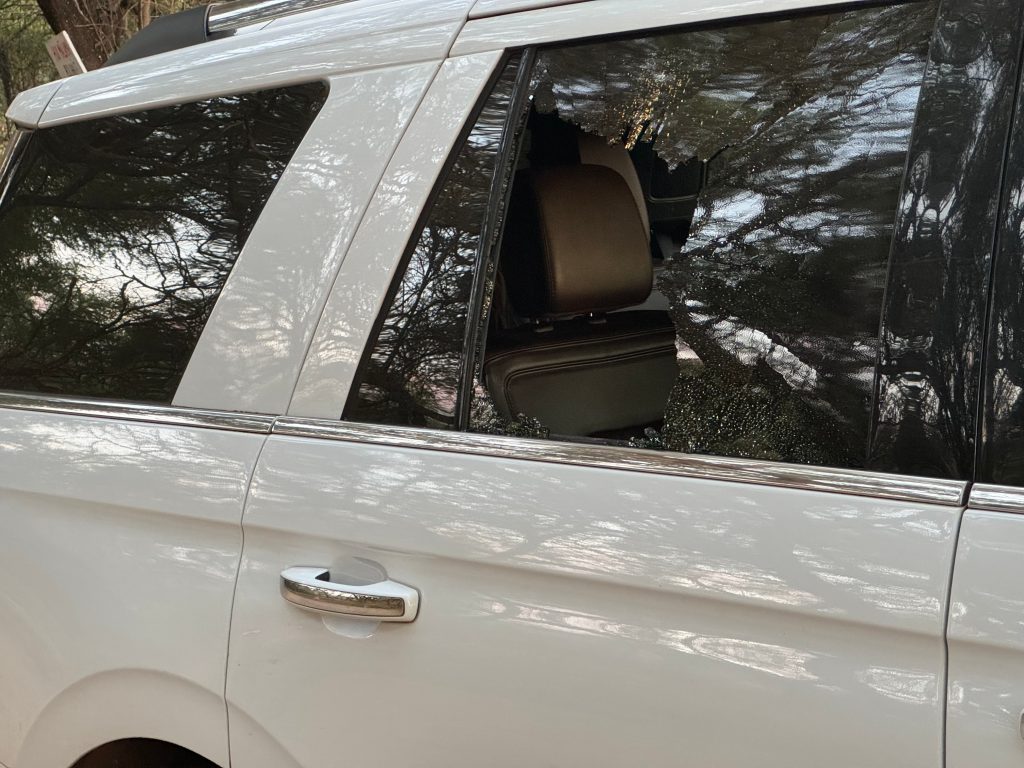
Nēnē Field Research Perils
During a field survey on Kauai in July our car was broken into and a backpack containing the days field notes and our cameras were stolen. The thieves were quick to locate the Airtags we hid throughout our various compartments and threw them out. We are bummed to lose the data we collected on that day which included over 300 Nēnē bands from the south shore of Kauaʻi.
Articles We were featured in this quarter
In the latest issue of Hana Hou, Hawaiian Airlines’ in-flight magazine, the article “Wild Goose Chase” by Janice Crowl highlights the work we are doing. If you are flying on Hawaiian Airlines in October and November be sure to check it out!
Nature – Harrowing trends: how endangered-species researchers find hope in the dark
Despite significant obstacles like habitat loss and climate change, the article highlights how innovative technologies and community collaborations offer hope. Success stories and legislative victories demonstrate the impact of dedicated conservation efforts.
